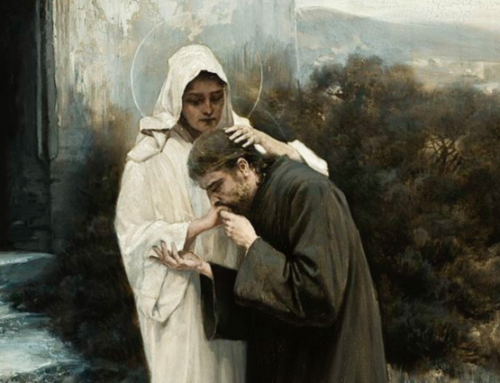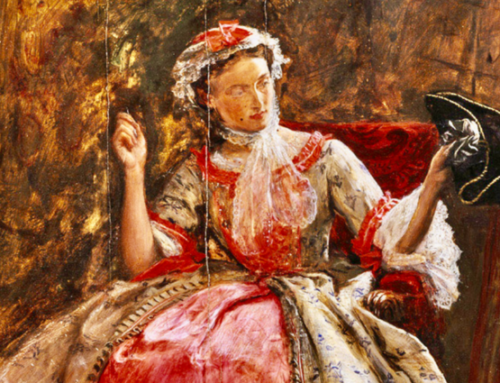Each one is a tool of influence. Parable often teaches truth or morals through comparison. Whether translated as the Greek “beside” or the Hebrew “meshalim,” known as a riddle of “mysterious speech,” the parable is always couched in story or the routine of life. Fable implements story in the same way with a variation on character. Animals or inanimates reveal general truth about our human nature while allegory lengthens to include symbol at multiple levels.
But sometimes a work of fiction can include elements of all three tools, and many authors hasten to beg their readers not to categorize, that is limit, a story by slapping on a single label. That is precisely what Walter Wangerin, Jr., asks of his readers in The Book of the Dun Cow, a National Book Award winner. In his afterword, Mr. Wangerin insists that the meaning must come from the reader’s experience, not from the author’s explanation.
Mr. Wangerin borrows from Chaucer’s The Nun Priest’s Tale where “as I have understood, / Beasts and birds could speak and sing.” His central character is Chauntecleer the rooster, a beautiful and proud bird like Chaucer’s:
There was not his peer in crowing…
By nature he knew (the hour of) each ascension…
His comb was redder than the fine coral,
And notched with battlements as if it were a castle wall;
His bill was black, and it shone like the jet stone;
Like azure were his legs and his toes;
His nails whiter than the lily flour,
And like the burnished gold was his color.
Chaucer’s Chauntecleer is haunted by dreams of his doom, soon come to light in an equally proud fox. Pride causes both fox and rooster to fall but Chauntecleer learns from his mistakes, and like a good fable, Chaucer illustrates how flattery is dangerous.
In The Book of the Dun Cow, Mr. Wangerin deepens the character of Chauntecleer to a firmly human status. Unlike Chaucer, Mr. Wangerin doesn’t overtly sermonize. At first, Chauntecleer reigns with bluster and fuss over his coop and the animals of his kingdom. His hens live in fear of him yet care deeply. He rages at Mundo Cani Dog yet values him. He is the most emotional rooster you could ever meet. But that can be a strength because Chauntecleer is not a picture of perfection. He instead exemplifies virtue in his weakness.
When his hens reveal their eggs are being stolen, Chauntecleer cries crows of grief to mourn their loss and his loss of the children that could have been. Yet he turns with wit and wisdom to angrily battle the thief and murderer, Ebenezer Rat. Instead of killing him in the fight, which would appear just, he stabs two pin feathers into the rat’s shoulders as the rat gnaws at his belly. Ebenezer can never hide in a hole again or sneak with ease into the coop. Chauntecleer defends his hens perfectly.
When Chauntecleer must save the Widow Mouse’s children, he knows he must. She is stunned with grief and can barely speak, yet he wisely asks, “I want to love your children. I want to see them living that I may love them.” He persuades her to break from grief so he can help. And he must persuade her tiny children to trust him, a stranger. Chauntecleer is more than winsome. He discerns what the children need to hear.
When Chauntecleer must persuade the beautiful hen Pertelote to let her guard down, to love him truly, he cries, “I never want to become the thing you fear. Pertelote, I should despair to be the thing that makes you afraid.” He desires a love without barrier because he loves well. Even in the first day of battle against the evil rooster Cockatrice, he “choked on his love” for his animals.
When the earth itself responds in cloud and rain to Wyrm’s rising evil, Chauntecleer knows. If the sun cannot mark the day, he will. His crowing “had become both sunlight and certitude for his animals; it made for them the day they never saw. It pointed placement for all their scattered and shredded feelings. And it brought them through in good order.” He remains discerning.
When John Wesley Weasel reacts to the death of the Widow at the bite of the basilisks, he begs Chauntecleer to allow him to kill, “One wants hating. Pleads for hating. Kills for hating.” But Chauntecleer is more measured. “I don’t ever want to hear that again. Never again in this Coop or on this land do I want to hear that you hate a living soul.” His wisdom seems God-given at a time when fight is needed.
But Chauntecleer is far from perfect. He knows God has placed him as a leader over this part of the earth yet he does rage against God when things go awry. When the rains are unceasing, when his three sons are killed by the basilisks, when his animals die by scores in the final battles, Chauntecleer is filled with doubt at the suffering. This is no simple fable with a singular lesson.
But when he becomes jealous of Mundo Cani, of the times when the Dun Cow whispers to the dog, even of his sacrifice to Wyrm, Chauntecleer must fight an internal battle as well. Mr. Wangerin couples Chaucer’s ideas of dreams of doom with the rooster’s pride. The medieval serpent Wyrm sends him dreams as if he knows Chauntecleer’s own soul. And frighteningly enough, he must. Chauntecleer fights pride, the need to be known, the need to be appreciated, and almost succumbs but for the grace and mercy of God through the Dun Cow.
Some may say a beast fable is too simple. Animal characters are too childlike. A barnyard is too predictable. But when I identify with even one fictional character, I know the author has succeeded in reaching me, his reader. Call it empathy or reality or humanity, I am hooked. I listen and hopefully learn through the tool of story itself. In the aggregate of parable, fable, and allegory, I say the simplicity of an animal story is most penetrating to our humanity.
The Imaginative Conservative applies the principle of appreciation to the discussion of culture and politics as we approach dialogue with magnanimity rather than with mere civility. Will you help us remain a refreshing oasis in the increasingly contentious arena of modern discourse? Please consider donating now.
Editor’s Note: The featured image is an illustration for Aesop’s Fables (1919) by Milo Winter (1888-1956).








Leave A Comment